|
|
|
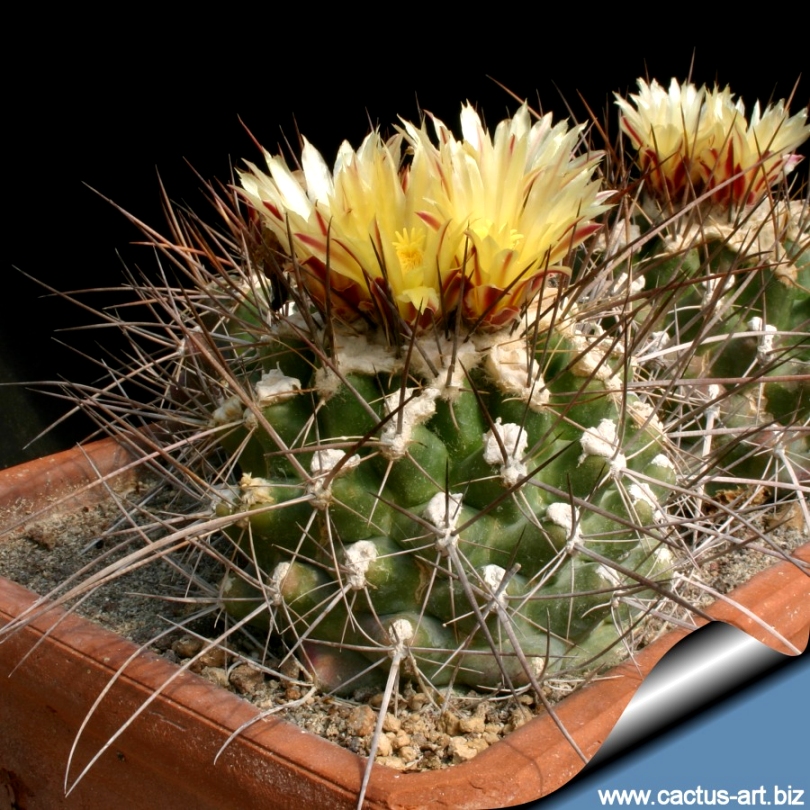
Thelocactus flavus (panarottoanus) PAN177B
La Hincada,
San Luis Potosí, Mexico
|
Description:
Solitary or slightly clustering and
forming small clumps up to 40 cm across.
Stem: Globose, single heads 5-12 cm wide, olive green to purplish
Ribs: Completely divided into tubercles arranged in 8 and 13
spirals,
Tubercles: Conical , basally rhomboid 8-17 mm long,
Areoles: With glands.
Central spines: 4, 15-80 mm long, ochre to greyish, straight or
slightly curved, acicular.
Radial spines: 3-5, 7-35 mm long, ochre to greyish, straight,
acicular.
Flowers: 30-45 mm wide, yellow. Anthers and stigma yellow
Flowering time:
Spring.
|
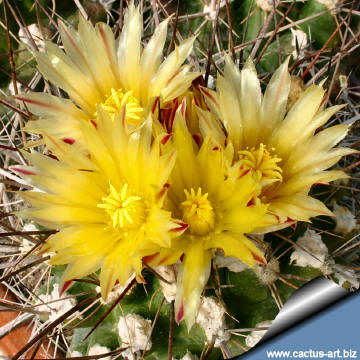 |
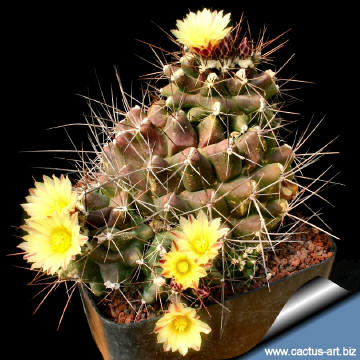 |
|
. |
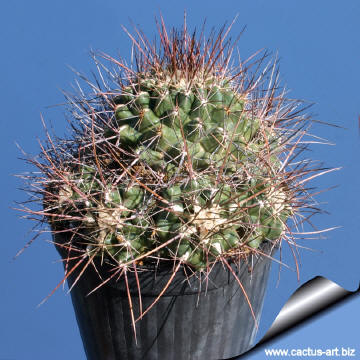 |
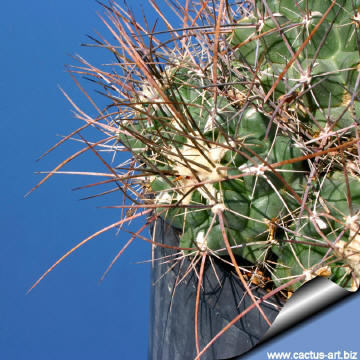 |
|
. |
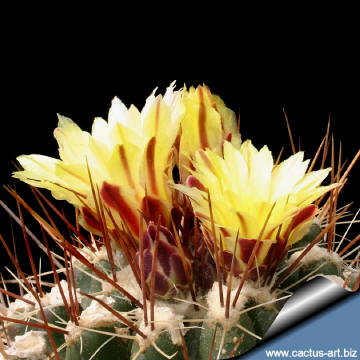 |
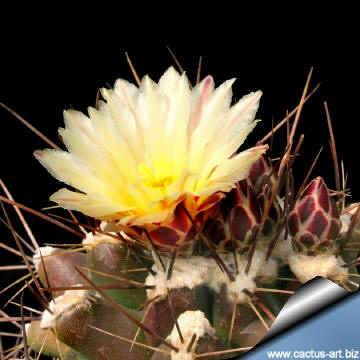 |
|
Thelocactus flavus (Syn: Thelocactus longispinus)
Flowers are translucent yellow. |
|


Advertising
|
|
|
|
|
Family:
Cactaceae (Cactus
Family)
Scientific Name (Basionym)
: Thelocactus flavus Mosco & Zanovello
In: Cactus & Co., 3: 20 (1999).
Holotype: Huizache, San Luis Potosi, Mexico, Kuenzler 362, cult.
A. Mosco, November 1998 (HG-Pad).
Conservation status: Listed in
CITES Appendix II
Origin: Mexico, San Luis Potosí, between Huizache and La
Hincada.
Habitat: Grows in matorral xerofilo on
limestone hills at elevations from 1200 to 1500 m.
Synonyms:
- Thelocactus conothelos ssp. flavus
(Mosco & Zanovello) Mosco & Zanovello,
Publisched in: Bradleya 18: 63 (2000).
- Thelocactus panarottoanus Halda,
Publisched in:Acta Mus. Richnov. Sect. nat. 5: 161
(1998).
- Thelocactus longispinus n. n.
(Listed in Schmoll catalogue)
- Thelocactus tulensis v. rinconadensis
|
Note: T. flavus is strictly related to
T. garciae
This species has been well known for a long time and is sometimes listed
in catalogues under the name Thelocactus longispinus n. n. which
have also been distributed with the field number HK362.
It has always been misidentified as Thelocactus tulensis and
considered a yellow flowering form of it. At a glance, flavus
resembles tulensis in the epidermis colour and the long central
spines, but the relationship stops here.
There are indeed many remarkable differences between the two species. In
flavus the areoles bear one or two glands, missing in tulensis;
the radial spines are quite different in number and arrangement; the
flowers of flavus are yellow with the primary stamens inserted above the
receptacle base, while the flowers of tulensis are white to pink
with the primary stamens inserted at the base of the receptacle. For the
flower morphology and seed micro-morphology, flavus is, instead,
referable to the Thelocactus conothelos complex.
Thelocactus panarottoanus is the same.
|
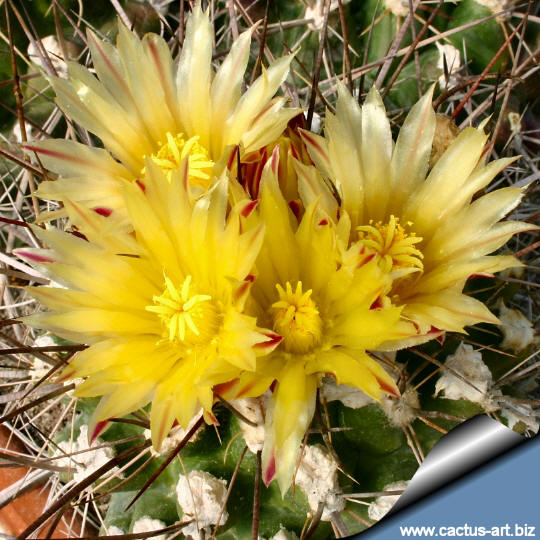
|
|
|
|
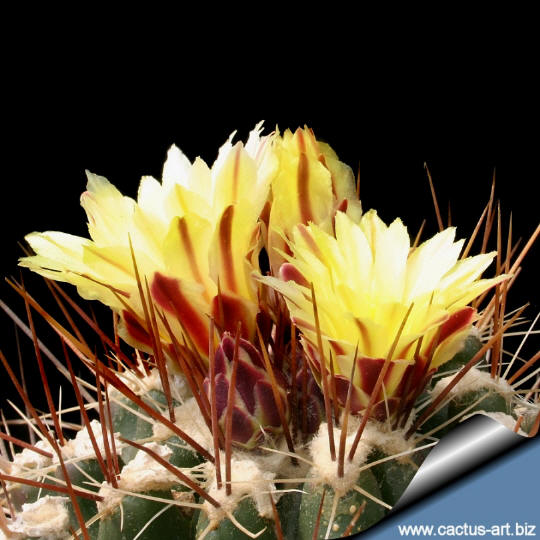
|
|
Cultivation:
Easy to cultivate. Water moderately from
Spring to Autumn. Keep dry in winter, can tolerate frequent moderate
frost, above approx -7C, Sun Summer grower needs full sun
exposures.
Reproduction: Nearly always from seed, since the plant rarely
produces plantlets.
Photo of conspecific taxa, varieties, forms and
cultivars of (Thelocactus
conothelos
complexcomplex):
|
|